 Located on France’s eastern border on the west bank of the Rhine plane, adjacent to Germany and Switzerland, the region of Alsace is a truly unique place for winemaking.
Located on France’s eastern border on the west bank of the Rhine plane, adjacent to Germany and Switzerland, the region of Alsace is a truly unique place for winemaking.
Sheltered from ocean air and breeze by the protection of the Vosges Mountains, the Alsace wine region receives some of the lowest rainfalls in France (on average, 16 – 20 inches per year) and benefits from a warm and dry climate during summer, an Indian summer in the fall, and a cold winter. At an altitude of 650 – 1300 feet, the vineyards take maximum advantage of their exposure to the sun, with vines are trained along high wires. The unique location of the vineyards contributes to the slow, extended ripening of the grapes, resulting in elegant, complex aromas and flavors.
According to Alsacewine.com, the geology of Alsace is a veritable mosaic of soils, made up of granite, limestone, schist and sandstone. Facing mainly south or south-east, their vineyards cover approximately 37,000 acres. The diversity of these soils is in part due to the fault line collapse that occurred approximately 50 million years ago between the Vosges and the Black Forest (in Germany), creating the formation of the Rhine plane.
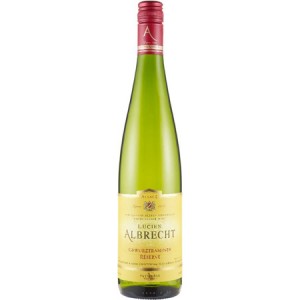

In 1425, Maison Albrecht founded their family winery, include estates in the prestigious terroirs of Alsace, France. We had the opportunity to experience our first taste of Alsace, with the Lucien Albrecht Gewurtztraminer Reserve 2010.
The vineyard uses a manual harvest technique, with no destemming-this means the entire bunch of grapes, stems and all, go into the wine press. This process is low pressure, and slow, lasting for several hours, to be followed by temperature controlled fermentation. Keeping the grapes cool means retaining acid, which will age the wine better, and create a better bottle.
Tasting Notes
This Gewurztraminer Reserve is made from selected grapes. On the nose, you’re immediately greeted with scents of honey, red roses and sweet pineapple, but the palate is dry and rich, with almost a silky texture that rolls around on the tongue. This was a lovely wine by itself, and we paired in with a chicken pasta primavera recipe with spring vegetables. Like most gewurztraminers, this wine has a definite spice to it, but the rose petal nuances were truly what made this wine a favorite.
Retail: Under $20
Organic Matters
About 100 producers of Alsace, are devoted to either organic or biodynamic farming, with numbers growing on an annual basis. Organic farming has been practiced in the Alsace region since the early 1970’s. Synthetic chemical pesticides are prohibited, and the winemaker must reduce necessary additions or interventions to the wine making process in order to preserve the natural, organic state of the wine. Minimal sulfur is used, making many Alsatian wines a good choice for those looking for low sulfite wines.
Hugel Pinot Blanc 2010
The second wine we tasted was a Hugel Pinot Blanc 2010. As a varietal frequently used to produce Crémant d’Alsace, the Pinot Blanc is delicate, soft, and fresh on the palate.
Tasting Notes
Pinot blancs are similar to an unoaked chardonnay or chablis, so keep that in mind when you’re pairing or planning how to serve them. The color is pale straw with hints of green, as you’ll find is the case with many Alsatian whites. The nose is of white peach, lime, citrus flower, with a little grass on the final note. We tried this wine with a mild quiche lorraine, and we’d also recommend trying this wine with soft cheeses like brie, or mild goat cheese. Hazelnut crusted cod or halibut would also make for a perfect wine pairing.
Retail: Under $15
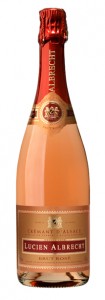

Our third wine from Alsace, France was a Lucien Albrecht Brut Rosé (no vintage), made from pure, 100% Pinot Noir grapes. These delicate, sometimes finicky grapes are hand picked in whole clusters, and softly pressed, creating a pale coral color that is perfect for brunch, weddings, or spring celebrations. This sparkling wine is made by using the same methods as in Champagne-“methode traditionnelle”.
Tasting Notes
Flavors of strawberry and red berries, with a dry, crisp acidity, a hint of salinity and sweetness, and a creamy finish. We would pair this the same as a still rosé, with lighter brunch fare, or a berry tart. A truly delicious sparkling wine.
Retail: Under $20.
Trimbach Riesling 2009
Trimbach brings us closer to the Alsace region’s German influence with this varietal. The color is once again straw yellow, with glints of green. The nose is pineapple and white flower, with peach and lemon zest on the finish.
We would pair this wine with marinated poultry or white fish dishes, sushi and Asian fare, or spaetzle and traditional German or Alsatian dishes like sauerkraut and pork.
Retail: Under $25
We’ve enjoyed this ‘tour’ of Alsace, and look forward to learning and sharing more about the region in upcoming editorials.
Main photo credit: Gerald Fuchs for Hugel wines

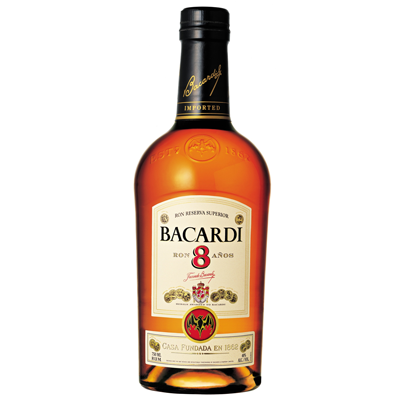
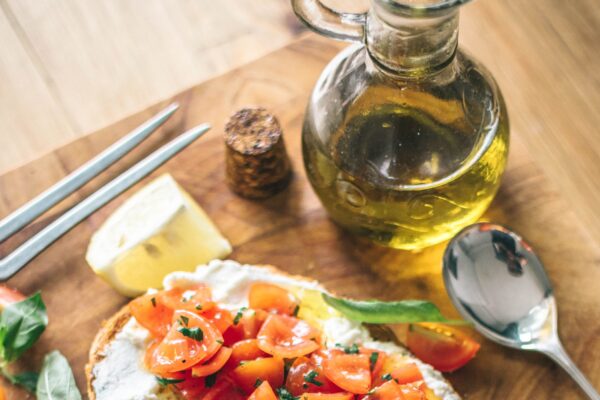
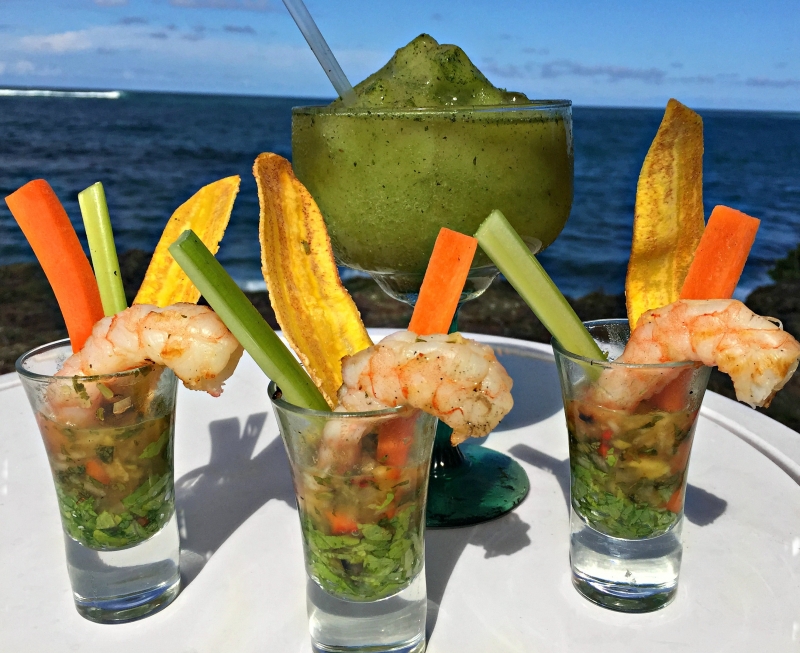
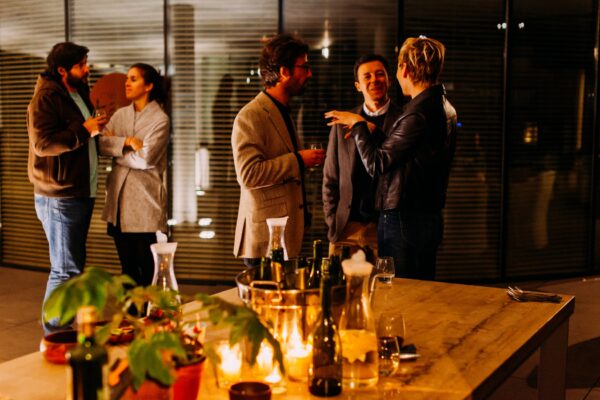
[…] be available for those that want to cleanse the palate. The ideal progression would be to move from sparkling wines, to whites, and then to reds, before finishing with sweet, or dessert […]